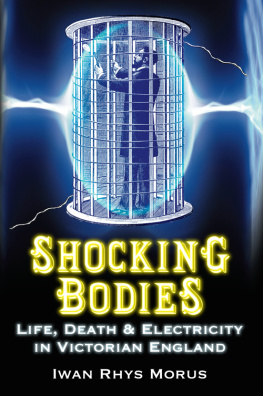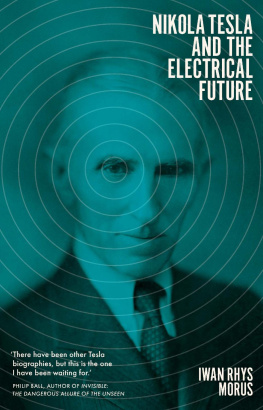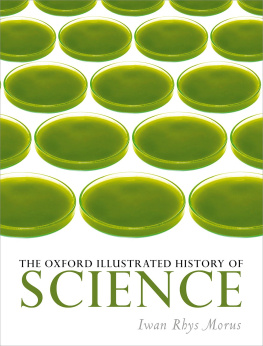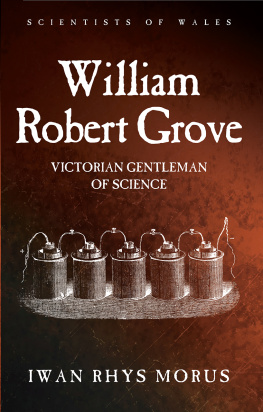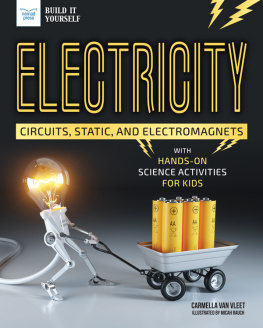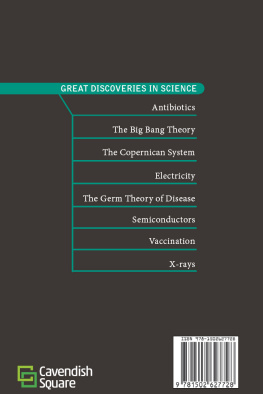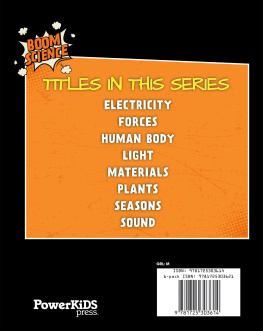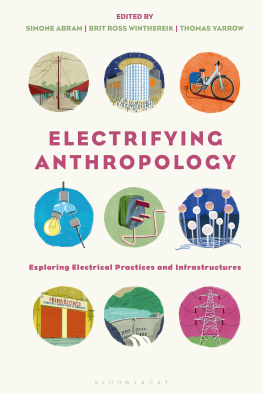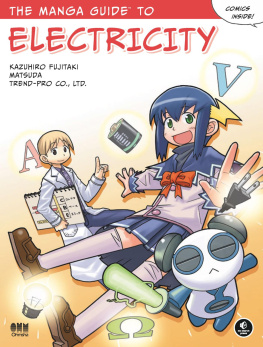
For my wife Mandy and son Gwilym Dafydd
In between other projects I have been working on this book for quite a long time. During that time conversations with a great many people have helped deepen my understanding of the history of Victorian science and culture. I am particularly grateful to Will Ashworth, Graeme Gooday, Jeff Hughes, Rob Iliffe, Bernard Lightman, Jim Moore, Richard Noakes, Simon Schaffer, Anne and Jim Secord and Andy Warwick. Some of the research was carried out with funding from the Wellcome Trust and I am grateful to the Wellcome trustees for their generosity. Much of the final writing took place during a years leave, for which I thank Aberystwyth University and the AHRC. I also thank my editors, Lindsey Smith and Christine McMorris of The History Press, for their work on this book. The book is dedicated to my wonderful wife Mandy. It is also dedicated to our son Gwilym Dafydd, who since his arrival half way through that year of writing has been doing his level best to distract his father from finishing the job.
CONTENTS
PART I |
one |
two |
three |
four |
five |
PART II |
six |
seven |
eight |
nine |
PART III |
ten |
eleven |
twelve |
PART IV |
thirteen |
fourteen |
fifteen |
sixteen |
PART V |
seventeen |
The Victorian age was full of shocking (and shocked) bodies. Throughout the nineteenth century, electricity was the stuff of life and death. When people thought about their own bodies how they worked, what the relationship was between body and soul, how the relationship between the sexes worked, or ought to work, even the politics of individual rights and obligations they turned to electricity as a way of making sense of difficult questions. So electricity helped the Victorians to understand their own bodies but their bodies helped the Victorians understand electricity too. We do not usually think about physics and bodies in the same breath, or at least not the messy, shambolic, everyday bodies we carry around with us. The bodies of physics, if it has any, are abstract, heavenly, ideal. This means that when we write histories of physics they tend to be disembodied too. Even when they are histories of great men (and they often are) they are histories that concentrate on minds, not bodies.
So what would a history of physics that took bodies seriously look like? This book is an effort to find out. In it, I try to find out how physics affected peoples bodies and how their bodies affected physics throughout the nineteenth century in Britain. I try to show that Victorian physics was indeed corporeal and that by looking at the bodies of physics we can get quite a different idea of where science belonged in nineteenth-century culture, why it mattered, and to whom. I try to show that we cannot really understand physics without taking bodies into account, but also that we cannot really understand Victorian bodies without paying attention to the physics going on around and with them.
Looking at things from this sort of perspective allows the historian to try writing the history of Victorian physics from below. In just the same way that economic, social or political historians now tend to avoid history written from the perspective of the powerful, and try to recover the aspirations and experiences of the crowd, I think we need to look at nineteenth-century physics with a different kind of eye. I have chosen four bodies, scattered across the century, and I want to try and understand what physics and electricity in particular did to and with those bodies. The bodies themselves are windows into the culture of Victorian electricity seen from an unusual angle. They take us from the political turmoil of the nineteenth centurys opening decades to the frenzied consumerism of the centurys end. By looking at these bodies and their fates I want to try to recover something of how electricity came to permeate nineteenth-century and Victorian culture, what it represented to those that encountered it and how it changed their lives. This means looking for and finding Victorian electricity in some sometimes unexpected places. Electricity throughout the nineteenth century was forever getting away from its producers, however mightily they laboured to keep it under control.
If there is a single thread that runs through all four sections of the book, it is the emphasis on electricity as a science of wonder. One of the reasons that looking at electricity through the lens of individual bodies is so illuminating is that electricity really was a very corporeal science, embedded and embodied in spectacular performances of all kinds throughout the Victorian age. Electricity was all about show for the Victorians and their immediate predecessors. Electricity was striking because it was spectacular. Electricity was thrilling and seductive. Nineteenth-century encounters with electricity could be intimate, titillating and flamboyant. In many ways electricity was dangerous exactly because it seemed so corporeal. You could feel electricity shuddering through your body or see it lighting up the sky. If no one agreed what electricity really was, everyone agreed that it was powerful stuff. This could make materialist messages even more seductive and leave some men of science struggling to control their electric creations. Electricity and electricians did not attract their audiences by appealing to their reason, they appealed by attracting their senses instead. Electricity simply was the science of showmanship to most Victorians, and those who thought otherwise had to struggle very hard indeed to disembody this most vital of fluids.
The books first body belongs to Tom Weems, an illiterate labourer who does not, I am afraid, survive the chapters opening pages. Weems body provides a way of raising the lid off the bubbling cauldron that was early nineteenth-century electrical culture. Electricity during the years of war with revolutionary and Napoleonic France was dangerous stuff and it was its very corporeality that its many enemies regarded as its most dangerous feature. Several decades away from being a Victorian himself, Weems body belongs in this primarily Victorian survey simply because it is impossible to understand Victorian electrical bodies other than against the backdrop of the centurys early decades. Later generations of men of science would set their faces firmly in stubborn opposition to what seemed to them the excessively sensationalist science of their Enlightenment predecessors. Their electricity would need to be carefully sanitised, and we can see this process starting in Sir Humphry Davys reaction to some of the experiments described in this section. But the events, arguments and experiments surrounding Tom Weems body also show how difficult it was to get away from sensationalist science. Electricity remained firmly corporeal, which meant that the battle would need to be fought all over again by the Victorians.
The next body belongs to Ada Lovelace, Lord Byrons only daughter and Soul of my thought, as he put it in Childe Harolds Pilgrimage. This might seem an unlikely location for a battleground over electricitys future, but that is exactly what Adas body became, for a while at least. By the early years of Victorias reign, electricity remained for many of its practitioners and its audiences a very bodily business. Electricity was in many ways tangible a mysterious fluid that might be invisible and unknown but whose effects were directly felt; intimately corporeal and sensationally spectacular. This was going to be one of electricitys paradoxes throughout the Victorian age. It was invisible, ethereal and no one really knew what it was, but at the same time its effects were unambiguously physical and thrillingly visual. Indeed it was just this quality that made electricity such a useful and ambiguous cultural resource. Whilst natural philosophers like Michael Faraday laboured hard to make electricity disembodied and reputable, Ada Lovelaces example demonstrates just how difficult that task would be. Adas view of electricity as a corporeal agent, and her understanding of electrical science as a route towards bodily self-knowledge, was radical and transgressive for many reasons but most importantly because of who she was. She was trying to frame a feminine view of electricity at odds with the perspective of scientific gentlemen.
Next page
